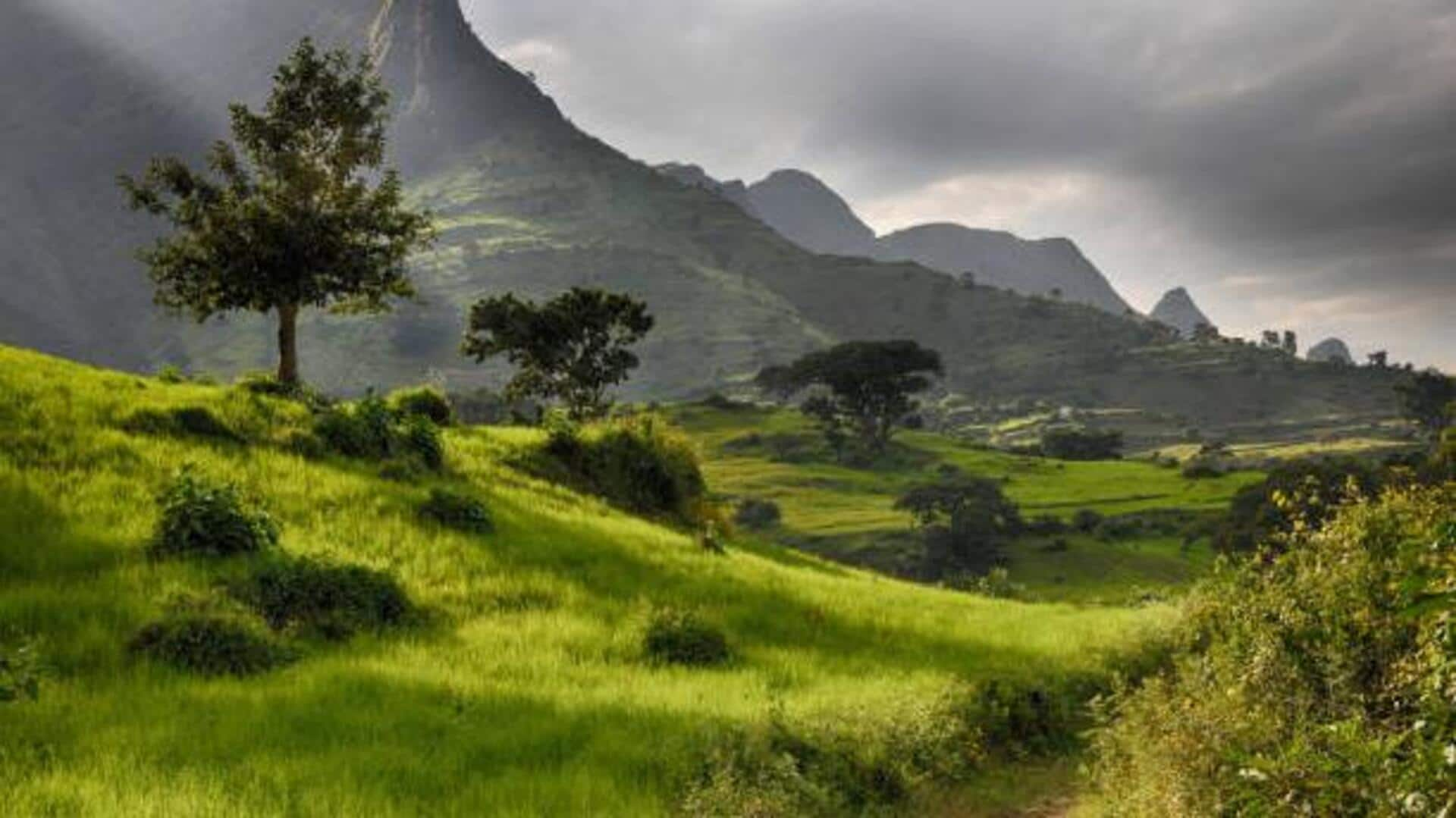
Hiking Ethiopia's Ras Dashen peak: A guide
What's the story
Ras Dashen, situated in Ethiopia's Simien Mountains, is among Africa's highest peaks but still unknown to many. At 4,550 meters, it promises an exhilarating trekking experience with incredible views and rich wildlife. Although ideal for adventure tourism, Ras Dashen is often eclipsed by other famed African peaks. Here's what makes this hidden gem so enticing and why you must visit it.
#1
The unique geography of Ras Dashen
Ras Dashen is a part of the Simien Mountains National Park, a UNESCO World Heritage site known for its dramatic landscapes. The peak features rugged terrain and steep cliffs, making it a challenge for even experienced hikers. Surrounding areas are characterized by deep valleys and jagged mountain ridges, remnants of ancient volcanic activity. This unique geography not only offers stunning vistas but also houses various endemic plant species.
#2
Rich biodiversity in the Simien Mountains
The Simien Mountains are also home to a number of rare animal species which can be seen during a trek to Ras Dashen. These include the Ethiopian wolf, Gelada baboon, and Walia ibex—all endemic to the region. Birdwatchers will also find delight in observing several bird species that inhabit these highlands. The rich biodiversity adds an extra layer of interest for nature enthusiasts visiting this remote part of Ethiopia.
#3
Trekking routes and challenges
Since trekking to Ras Dashen isn't an easy task (the routes are steep and it is at high altitude), it requires preparation. Most treks begin from Debark town, from where permits are obtained to enter the national park. Hikers spend days walking through trails passing through villages like Chennek or Sankaber before reaching the summit base camp at Ambiko village. Acclimatization is important as altitude sickness can affect climbers above 3,000m.
#4
Cultural encounters along the way
Trekking to Ras Dashen also opens up cultural encounters in villages like Geech or Imet Gogo. Here, you interact with the Amhara people, learning about their centuries-old farming, weaving, and musical traditions. These experiences give you a glimpse into life in one of the most secluded regions of Africa.